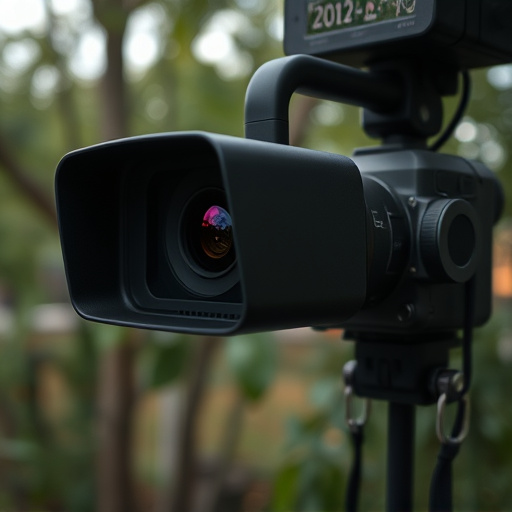Learning to conceal spy cameras involves strategic placement using everyday objects like bookends and fake smoke detectors. This approach blends surveillance into the environment while respecting tenants' privacy. However, installing hidden cameras in rental properties carries ethical and legal risks, particularly in areas like bedrooms and bathrooms. Instead of hiding cameras, landlords should prioritize open communication about security measures.
Uncover the hidden world of secret surveillance in rental properties with our comprehensive guide. Learn the art of identifying discreet placement for spy cameras, mastering the use of everyday objects to conceal surveillance equipment, and delving into the ethical considerations surrounding privacy and legal implications. Discover practical tips on how to conceal spy cameras and stay one step ahead while navigating this complex landscape.
- Identifying Discreet Placement for Spy Cameras
- Using Everyday Objects to Conceal Surveillance Equipment
- Ethical Considerations: Privacy and Legal Implications
Identifying Discreet Placement for Spy Cameras
Identifying discreet placement for spy cameras is an art that requires a keen eye for detail and an understanding of modern technology. When setting up hidden surveillance, the goal is to integrate the camera seamlessly into the environment while maintaining optimal visibility. Common areas like hallways, living rooms, or even kitchen counters can be obvious choices, but true mastery lies in finding less expected locations. For instance, a small device disguised as a smoke detector or a fire alarm can monitor activity without raising suspicion. Alternatively, fake power outlets with built-in cameras offer an elegant solution, allowing for covert observation while maintaining the property’s aesthetic appeal.
How to Conceal Spy Cameras involves understanding the unique characteristics of each rental unit. Consider the lighting; natural or artificial? Can a camera be positioned to take advantage of existing light sources? Or, in low-light areas, infrared technology can provide discreet and effective monitoring. Additionally, exploring creative angles and heights is key. A camera mounted high on a bookcase or strategically placed behind a painting can capture footage without being easily detected. By combining these tactics, landlords or property managers can create an extensive network of surveillance while maintaining the trust and comfort of tenants.
Using Everyday Objects to Conceal Surveillance Equipment
Many people are unaware that everyday objects can double as clever hiding spots for surveillance equipment, making it easier to set up hidden cameras without raising suspicion. Creative placement of these devices is an art, and with a bit of resourcefulness, you can transform ordinary items into powerful tools for monitoring your rental property. For instance, a small, decorative bookend can house a camera within its hollowed-out center, providing a discreet way to watch entry points or common areas. Similarly, fake smoke detectors are now available with hidden compartments, allowing you to place a spy cam in plain sight while keeping an eye on potential issues.
How to Conceal Spy Cameras involves understanding the concept of blending in. By utilizing items already found in a home, such as light switches, electrical outlets, or even houseplants, it becomes possible to capture footage without drawing attention. These hidden cameras can be incredibly useful for landlords and property managers to ensure the safety and well-being of their investments, especially in high-risk areas like kitchens and bathrooms. With some simple adjustments and a bit of imagination, you can create a comprehensive surveillance system while maintaining the appearance of a normal living space.
Ethical Considerations: Privacy and Legal Implications
The installation of hidden cameras in rental properties raises significant ethical and legal questions surrounding privacy rights. As technology advances, devices capable of discreet surveillance become increasingly accessible, tempting landlords to monitor their tenants’ activities. However, this practice can infringe upon individuals’ reasonable expectation of privacy, a cornerstone of many legal systems. Tenants have the right to expect certain spaces within their homes—such as bedrooms and bathrooms—to remain private and free from surveillance.
Landlords must carefully consider the ethical implications of employing spy cameras, especially when it comes to how to conceal them effectively. While some devices can be disguised as everyday objects, others may not offer the level of discretion necessary to avoid raising suspicions among tenants. Legal ramifications could include civil rights violations or even criminal charges if individuals discover they’ve been surveilled without their knowledge. Therefore, landlords should prioritize open communication with tenants regarding security measures rather than resorting to hidden cameras, ensuring transparency and respecting residents’ privacy.
While the strategic placement of spy cameras can offer valuable security solutions, it’s crucial to navigate this technology responsibly. Understanding how to conceal spy cameras through discreet positioning and everyday object camouflage is essential, but always remember the ethical and legal implications. Prioritizing tenant privacy and adhering to local laws regarding surveillance equipment is paramount for any property manager or homeowner considering these measures. By balancing security needs with respect for personal boundaries, you can create a harmonious environment that feels both safe and private.
